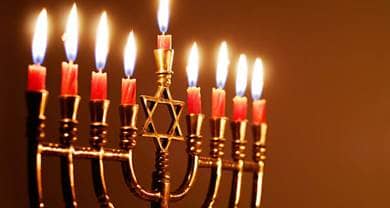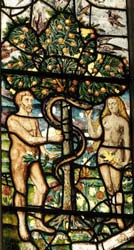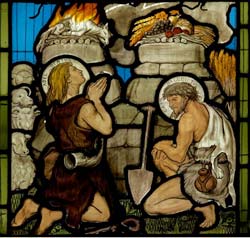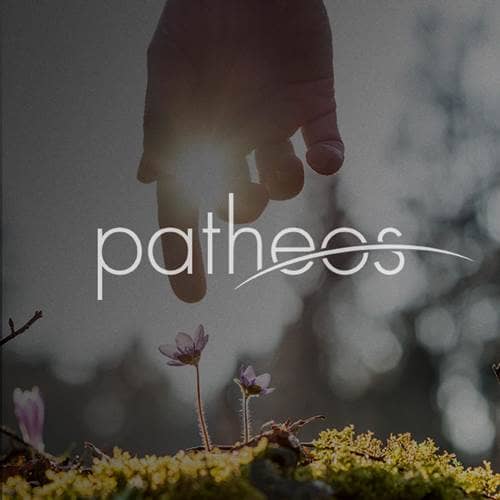- Trending:
- Pope Leo Xiv
- |
- Israel
- |
- Trump
- |
- Social Justice
- |
- Peace
- |
- Love

RELIGION LIBRARY
Judaism
Sacred Narratives
 The foundation of Jewish sacred narrative is the Hebrew scriptures, and its thematic center is the evolving relationship between God and Israel that is presented in a linear fashion with three temporal coordinates: creation, revelation, and redemption. The first point on the time line is creation and the myths associated with the origins of the cosmos that are common to the ancient near east, specifically the creation of the world in seven days as stated in Genesis 1: the first day in which God creates light, separating it from darkness; the sky on day two; land and plants on day three; the celestial lights of the sun, moon, and stars on day four; fish and birds on day five; land animals and humans on day six; and Shabbat rest on day seven.
The foundation of Jewish sacred narrative is the Hebrew scriptures, and its thematic center is the evolving relationship between God and Israel that is presented in a linear fashion with three temporal coordinates: creation, revelation, and redemption. The first point on the time line is creation and the myths associated with the origins of the cosmos that are common to the ancient near east, specifically the creation of the world in seven days as stated in Genesis 1: the first day in which God creates light, separating it from darkness; the sky on day two; land and plants on day three; the celestial lights of the sun, moon, and stars on day four; fish and birds on day five; land animals and humans on day six; and Shabbat rest on day seven.
| Creation: GENESIS | Revelation: EXODUS | Redemption |
| creation myth flood covenant with Noah |
God and Israel on Sinai | freedom from slavery received as God's people |
Genesis chapters 3-9 present other origin narratives that explain the roots of evil beginning in the story of the first human beings, Adam and Eve. The serpent represents a type of preexisting evil in the universe; it convinces Adam and Eve to eat of the tree of knowledge that leads to increased understanding and shame over their nakedness. Moreover, their divine punishments serve as an etiological myth for snakes slithering on the ground, female pain in childbirth and apparent subordination to the male, as well as manual labor for males.
 While Genesis 3 involves the tension between choice and temptation within the human psyche as a result of the serpent's evil influence, Genesis 4:1-16 transposes the internal conflict into a sociological context involving the murder of a brother resulting from an apparently inexplicable tension between Cain, Abel, and God, based on God's refusal to take Cain's offering. Yet this narrative is not so much about Cain's intention to commit a crime, but rather about how he deals with unjustified suffering when he does not receive a response from God for his offering. Cain thus inherits the internal tension of his parents to resist the existence of evil in the form of the serpent as a result of selfishness, but then acts upon it in a way that causes someone else's death, turning desire and curiosity into interpersonal aggression, rage, and revenge. Again the knowledge of good and evil leads to death and banishment east of Eden.
While Genesis 3 involves the tension between choice and temptation within the human psyche as a result of the serpent's evil influence, Genesis 4:1-16 transposes the internal conflict into a sociological context involving the murder of a brother resulting from an apparently inexplicable tension between Cain, Abel, and God, based on God's refusal to take Cain's offering. Yet this narrative is not so much about Cain's intention to commit a crime, but rather about how he deals with unjustified suffering when he does not receive a response from God for his offering. Cain thus inherits the internal tension of his parents to resist the existence of evil in the form of the serpent as a result of selfishness, but then acts upon it in a way that causes someone else's death, turning desire and curiosity into interpersonal aggression, rage, and revenge. Again the knowledge of good and evil leads to death and banishment east of Eden.
 This theme of evil culminates in the story of the flood, which has a direct parallel in the Mesopotamian flood narratives, Gilgamesh and Atrahasis. Like Genesis, these ancient flood narratives provide a culmination for the literary schema of creation, development, and degeneration of humanity. In all three narratives, there is a decision to destroy humanity with a flood that is considered divine retribution for general human injustice, described in Genesis 6:5. In each narrative, a god warns a human being and instructs him to build an ark allowing for the survival of a small group of humans and animals. The floodwaters cause all life outside the ark to be destroyed, representing an explicit reversal of the creation.
This theme of evil culminates in the story of the flood, which has a direct parallel in the Mesopotamian flood narratives, Gilgamesh and Atrahasis. Like Genesis, these ancient flood narratives provide a culmination for the literary schema of creation, development, and degeneration of humanity. In all three narratives, there is a decision to destroy humanity with a flood that is considered divine retribution for general human injustice, described in Genesis 6:5. In each narrative, a god warns a human being and instructs him to build an ark allowing for the survival of a small group of humans and animals. The floodwaters cause all life outside the ark to be destroyed, representing an explicit reversal of the creation.
In the case of Genesis, Noah is like the new Adam who will be the next progenitor of humanity after the flood. The sign of the covenant made between God and Noah after the flood is a rainbow, a symbol of the divine promise of redemption offering the comfort and consolation associated with Noah in Genesis 5:29. Finally, the ark rests on a mountaintop and birds are sent out to discover if water has receded, followed by a sacrifice after the ark is emptied. Whereas there is no guarantee that gods won't destroy the world again in the Mesopotamian flood narratives, in Genesis God displays a rainbow in heaven marking the end of the flood; God explicitly reverses an earlier curse to Adam in Genesis 3:17, promising never to curse the earth again.
These creation narratives are followed by a set of narratives surrounding the next major theological event on the biblical timeline, revelation. This is the fundamental encounter between God and Israel at Mt. Sinai, described in the Book of Exodus, in which they enter into a conditional covenant based on divine commandments. This narrative is preceded and legitimized by earlier myths of the patriarchs and matriarchs in Genesis. These portray the origins and development of this relationship between God and Israel as it originates with the divine promise of progeny and land to Abraham.
This narrative reflects a progression from a divine relationship with an individual to a family and eventually to tribes. In addition, Exodus also presents the paradigmatic narrative of exile when the Israelites were strangers and slaves in Egypt, a narrative that would be repeated later in the Hebrew scriptures and throughout history following the destruction of the First and Second Temples. This exilic narrative would also become the ethical basis for Jewish treatment of the slave, the marginalized "other" and needy outside the community.
 The final narrative point on the biblical timeline is that of redemption, which begins with the Israelite redemption from slavery, traverses the midpoint of revelation, and continues indefinitely through the intertribal conquest of the land of Israel, the ensuing monarchy, and the recapitulation of the exile. This narrative segment involves the fulfillment of four divine promises in Exodus 6 in which God will "bring out," "deliver," "redeem," and "take" the Israelites to be God's people. Yet there was a fifth promise of God to "bring" the Israelites to the land of Israel, which was only temporarily fulfilled because of the resumption of the exile after the destruction of the First and Second Temples. It is this unfulfilled promise of redemption that Jews commemorate during the holiday of Pesach by reenacting the Israelite exodus from Egypt as a paradigm of future redemption for themselves and the world.
The final narrative point on the biblical timeline is that of redemption, which begins with the Israelite redemption from slavery, traverses the midpoint of revelation, and continues indefinitely through the intertribal conquest of the land of Israel, the ensuing monarchy, and the recapitulation of the exile. This narrative segment involves the fulfillment of four divine promises in Exodus 6 in which God will "bring out," "deliver," "redeem," and "take" the Israelites to be God's people. Yet there was a fifth promise of God to "bring" the Israelites to the land of Israel, which was only temporarily fulfilled because of the resumption of the exile after the destruction of the First and Second Temples. It is this unfulfilled promise of redemption that Jews commemorate during the holiday of Pesach by reenacting the Israelite exodus from Egypt as a paradigm of future redemption for themselves and the world.
Study Questions:
1. Where does Jewish sacred narrative originate?
2. What are the major themes within the book of Genesis? How is it a story of creation and destruction?
3. When did revelation occur within Jewish scripture? What was revealed?
4. What does Jewish sacred narrative reveal about redemption?










